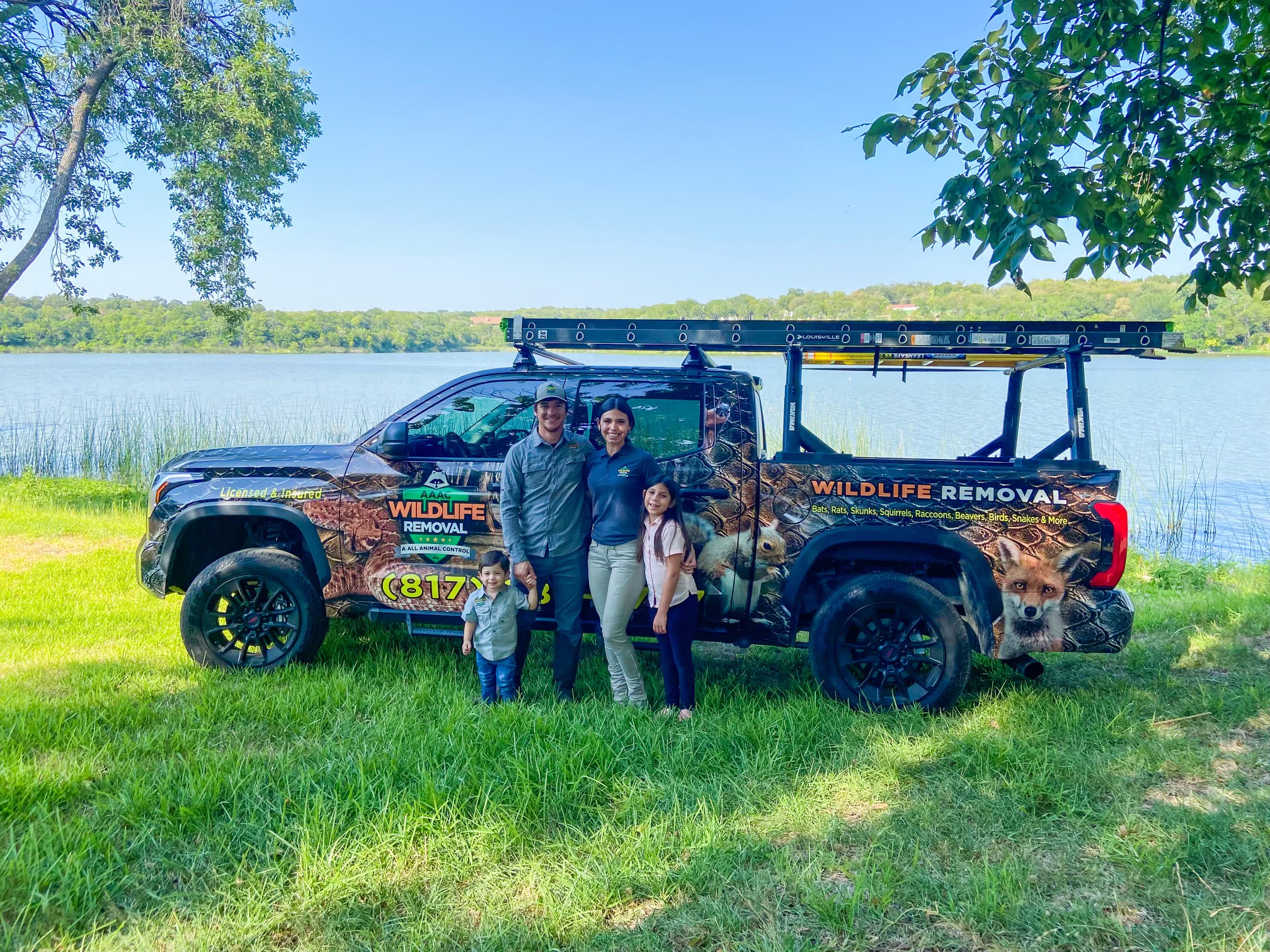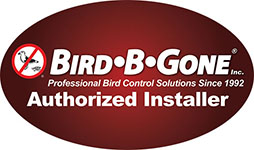
What is Wildlife Exclusion?
Exclusion means sealing off entry points for animals to your home or business in a way that stops them getting in. It is much easier than trying to exclude wildlife yourself. Sealing all entrance points to your home or business at once can make it more manageable.
AAAC Wildlife Exclusion Services provides humane removal services for wildlife that pose a threat to your business or home. We have the expertise to exterminate safely and effectively.
We can help if there are animals living underneath your house or inside your walls. We will seal any animal entry points we find. These include holes in floors, cracks around pipes, and anything else that could allow an animal to enter your home or business.
How We Conduct Wildlife Control and Exclusion Services
If you’re considering trapping and possibly getting rid of nuisance wildlife that has somehow managed to get into your home and business. Know that the problem is not solved by trapping alone. You might exterminate the first infestation, but without wildlife exclusion services, you are just waiting until the next group of critters decides to move in. Here are the steps taken to stop the infesting cycle using animal removal techniques.
Find and seal all entry points:
We begin by finding all access points used by animals. This could be holes in floors or cement cracks that surround pipes or any other way an animal might get into your home. This can also include holes in roof shingles, roof flashing, and eaves. Then, we block off any access points. In some cases, we do this by drilling rubber grommets (or metal grommets) on top of the hole. This seals it tight. Wire mesh can be used to plug the holes in other cases. Third, we will cover the blocked hole with weatherproof fabric to keep out rain, snow, and wind. Lastly, we need to wait and see if there are any other openings that could lead animals inside your building before sealing them off as well.
Exclude wildlife using a trap or one-way door
Top pest experts will find the main entrance wild animals use for entry to your home and business. We deliberately leave this gap open so we can properly eliminate nuisance wildlife. Once we have identified the hole, we can either use a live trap or a one-way door.

One-way doors: A one-way entrance is an option for those who don’t want their animal killed. These doors are specifically designed for animals that allow them to enter but not go. To use one of these, we carefully open a hole in the door that is just big enough for the animal to fit through but too small to turn around and come back out of. Then, we place some bait on the other side of the opening and wait until the animal enters. The door can’t be opened from this side so they won’t be able to turn around and go back once they reach the bait.

Live traps: We place traps close to any openings on the roof or outside that animals might use to enter your home. By placing traps near these openings, we can lure the animals into our trap so we don’t have to deal with them or see them at all. Once the animal enters the trap, it’s caught!. We might need to install a cage trap if we are trying to trap larger animals like raccoons or opossums. This is a wire mesh trapping device that will keep the animal inside, then technicians from our wildlife removal company will remove it from your home
Popular Access Points for Animal Entry
For future wildlife infestations to be prevented, an experienced wildlife pest control company operator must inspect all the possible ways squirrels, rodents (rats, mice, bats, birds, and other wildlife) can use to access your home. AAAC Wildlife Removal does a thorough job, but here’s a quick overview of the most common access points animals use to enter your home.

Ridge Vents
Bats typically enter attics through the ridge vent, which is a metal strip that runs along the edge of the roof. Ridge Guard is a product that seals any openings at the vent. We can seal the vents and do a complete roof replacement to make your house animal-proof. If you take photos of the roof, we can give you an idea of whether or not your ridge vents are open to animals.

Gable Vents
Many homes have gable vents that allow squirrels, raccoons, and other wildlife to get in. These vents are intended to allow for airflow to your attic, even in hot weather. These vents can be secured with wire mesh. It allows airflow, but not animal’s entry. We can also secure the vent flaps and replace any rotted wood that may have allowed an opening for critters to enter in the first place.

Dryer Vents
Dryer vents can be a common entryway for rodents or birds. These vents are a common entry point for rodents and birds. The airflow that comes through dryer vents is enough to keep them alive, so it’s important that we secure these areas with metal mesh and seal up any openings in the vent itself.
The warm airflow that flows through dryer vents is what birds like. You’ll notice an increase or decrease in your electricity bill as dryer vents are used by birds for access to their nesting space. Common vent guards are the best way to prevent this.

Soffit
Squirrels and raccoons love to enter your attic through damaged soffits. An expert wildlife removal service will replace any rotten wood that may be allowing wildlife in and then seal the openings with closures or metal wire mesh. Your soffit is guaranteed to look new and your rodent family gone.

Fascia
Wild animals love to visit the fascia of a house. The fascia, if you have gutters on your roof, is the area that would be beneath the gutter. The fascia is a longboard that fills in any space between your roof and your eaves. To prevent wildlife from using this access point, we secure all gaps with metal mesh, remove and replace any rotted wood, and then install a metal cover that prevents animal entrances but allows water to flow freely.

Eaves
Raccoons love the eaves of your house and can get in through them. Eaves are where your roof meets the side of your house. Our technicians can either place the metal mesh in these areas to exclude wildlife, or we can install special Eaves Guards that will stop animals from getting back in.

The Chimney
The chimney is the most common entrance point for animals into a residence. We can either use chimney caps to block this entryway or remove and replace the chimney liner if it is necessary to eliminate critters already living in the home.
Raccoons, squirrels, and bats love to nest in chimneys. This is usually an access point that is hard for animal control companies to check because of venting and fire hazards. We often use flameless heat-detection cameras to find animals in hiding. Or we can simply remove the old liner and cover then replace them once the critter is removed.

Cracks in the foundation
Foundation cracks are the favorite access point for rodents. We can patch foundation cracks with a cement filler compound to make sure that rodents cannot enter through the walls anymore. This type of repair not only prevents animals from entering but also improves the exterior appearance of your home.

Exposed pipes
All species of rodents just love to get inside the walls of your home using exposed pipes. You can prevent this by covering up any openings with metal mesh. Then, cover them with a cap that allows air to circulate freely through your home.

Wildlife Damage Repair Service
Once your wildlife exclusion is complete, it’s important to repair the damage that rodents, squirrels, bats, birds, mice, rats, or other pests may have caused. Many wild animals will make their entryway into your home bigger by gnawing it with their teeth and by scratching with their claws. Some of the damage can be quite ugly.
Our wildlife damage repair services are top-notch among pest control providers. We have the skills and experience required to repair any form of wildlife damage. Our contractors can repair damaged drywall, insulation, and wood by themselves or in a group. They have the experience and knowledge to fix your home quickly and efficiently, reducing the likelihood of suffering future animal damage.
Learn more about Wildlife Damage Repair

Attic Restoration
An infestation could cause your attic to be contaminated with blood, urine, and feces. This can lead to a stench that is both unpleasant and conducive to mold growth. Our pest control experts will replace any contaminated insulation by fresh materials that have been treated against humidity and odor. We can also replace insulation damaged by rats, mice, or squirrels with new materials that are secured to your attic floor by heavy-duty staples. Attics can be restored to their former glory with our attic restoration service!.
Learn more about Attic Restoration
Wild Animal Pest Control
Exclusion is an effective method of controlling wildlife pests. Wildlife can be humanely captured or encouraged to flee, and then they are unable to return to your home once their holes have been closed. This article provides information about a professional wildlife exclusion service that resolves the problems caused by wild animals. Call AAAC Wildlife Removal today for an expert wildlife exclusion service!











